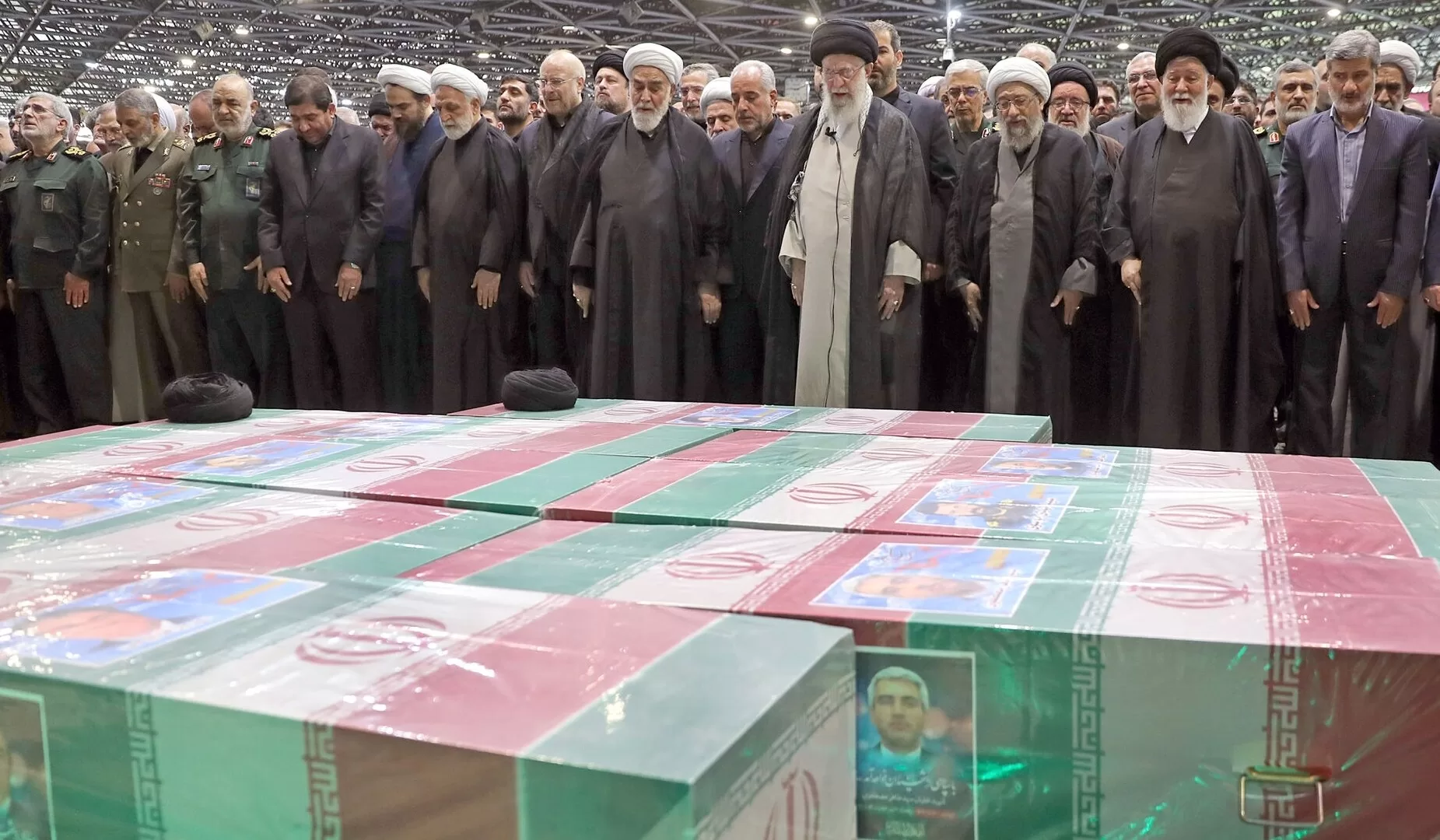“Oh Allah, we didn’t see anything but good from him,” said Khamenei on Wednesday, paying tribute to Raisi at the University of Tehran before crowds of tens of thousands, who proceeded to walk from Enghelab (Revolution) Square to Azadi (Freedom) Square.
Minutes ago Imam Khamenei led the funeral prayer over the bodies of President Ebrahim Raisi and his esteemed companions pic.twitter.com/eSFemTDsne
— Khamenei.ir (@khamenei_ir) May 22, 2024
The caskets of Raisi, who was 63, and the seven others who died in the crash on Sunday, including Foreign Minister Hossein Amirabdollahian, were draped in Iranian flags with their pictures on them.
Al Jazeera’s Resul Serdar, reporting from Freedom Square, said there was tight security in the area.
“The streets are completely closed to the traffic, [with] heavy security measures here, several security checkpoints, and you can see thousands and thousands of people are already pouring into this area.”
Guests at the memorial event included Hamas’s political leader Ismail Haniyeh, Turkey’s vice president and foreign minister, the deputy prime minister of India, the head of the Russian Duma, the Iraqi prime minister and representatives of the Taliban from Afghanistan, he reported.
“I come in the name of the Palestinian people, in the name of the resistance factions of Gaza … to express our condolences,” Haniyeh told those gathered. He recounted that he had met Raisi in Tehran during Ramadan and had heard the late president saying Palestine was the key issue of the Muslim world.
Khamenei has declared five days of national mourning. Memorials for Raisi and his entourage began on Tuesday in the city of Tabriz and the Shia clerical centre of Qom.
Following Wednesday’s procession, Raisi’s body will be taken to his hometown of Mashhad in the country’s northeast, where he will be buried after funeral rites at the Imam Reza Shrine.
The remains of others who were killed in the crash will also be sent to their hometowns to be buried.
Investigation
State television announced Raisi’s death early on Monday, a day after the helicopter crashed on a fog-shrouded mountainside in northwest Iran on the way to the city of Tabriz.
A search and rescue operation was launched, with help from Turkey, Russia and the European Union.
Questions have been raised as to whether Raisi, Amirabdollahian and the others should have been travelling on a two-blade Bell 212 believed to have been decades old.
Foreign sanctions on Iran dating back to the 1979 revolution, and subsequently over its nuclear programme and its backing of the so-called “axis of resistance”, have made it difficult for the country to obtain aircraft parts or new aircraft.
The country’s armed forces chief of staff Mohammad Bagheri has ordered an investigation into the cause of the helicopter crash.
Raisi was elected president in 2021 and was widely expected to succeed Khamenei as supreme leader.
At Wednesday’s procession, huge banners hailed the late president as “the martyr of service” and “the servant of the disadvantaged”.
But he leaves a complex legacy, having overseen a deepening economic crisis and a harsh crackdown on mass protests that erupted in 2022 after the death in police custody of 22-year-old Mahsa Amini.
Khamenei, who wields ultimate authority in Iran, has assigned Vice President Mohammad Mokhber, 68, as caretaker president until the June 28 election for Raisi’s successor.
“Iranian society is deeply divided on political lines,” said Al Jazeera’s Serdar.
“In recent elections, turnout has been lower and lower. The turnout is one of the primary sources of political legitimacy for the political establishment here, and we can see that it is going down and many people are losing faith in elections,” he said.
“The political establishment here is going to mobilise all the means and capabilities in trying to bring that turnout high and show that the nation is united behind the political establishment.”
